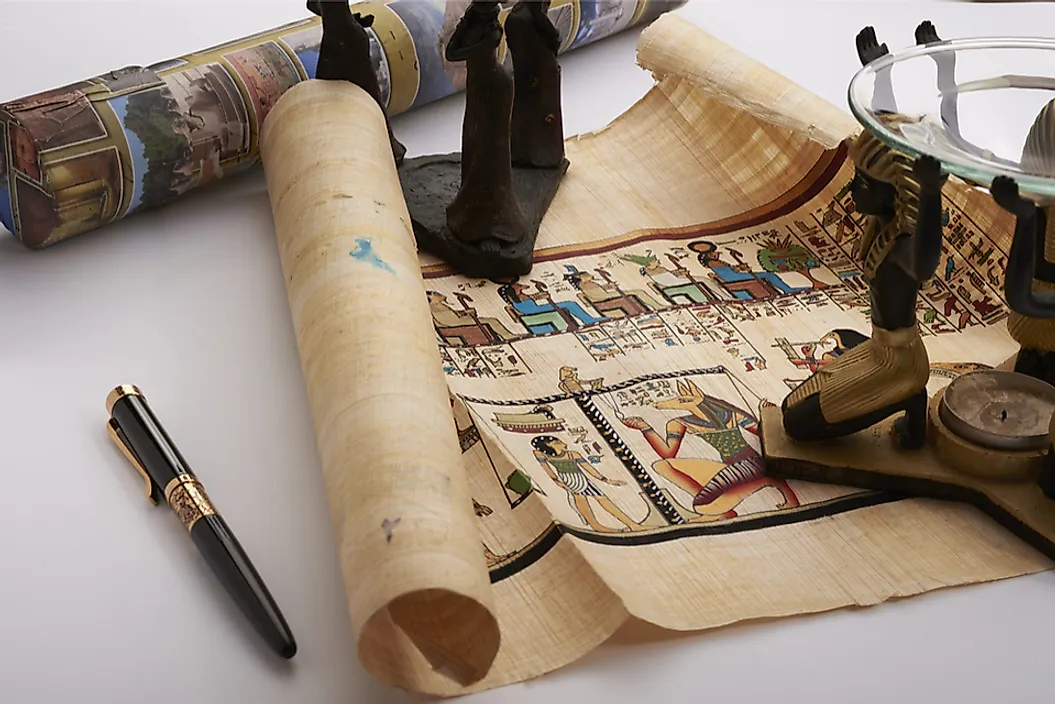How Is Papyrus Manufactured and What Are Its Uses?

What Is Papyrus?
Papyrus is a thick, paper-like material that dates back to the ancient Egyptian era. The oldest examples of papyrus are believed to have originated between 1550 and 1560 BC and were discovered in Egypt along the shores of the Red Sea in 2012 and 2013 AD. The term papyrus may also refer to a type of scroll made up of sheets of papyrus that have been rolled together from either side to meet in the middle. Modern paper and books are considered the descendents of papyrus materials.
How Is Papyrus Manufactured?
The Cyperus papyrus plant, which resembles a reed and grows in swamp-like conditions, is necessary for the production and manufacture of papyrus material. This plant has a long stem that is cut lengthwise so that the outer covering may be removed. The inner material, known as pith, is harvested and separated into 16-inch pieces. While these strips are still fresh and damp, the producer places them side by side, allowing the edges to sit on top of each other slightly. This process is repeated again, with the second layer placed over the first in the opposite direction. The manufacturing process continues while the strips are still damp and the producer uses a hammer to pound the two layers together so that they adhere to each other, forming a single piece. This semi-finished product is left to dry under weights so that it retains a flat shape and does not curl up around the edges. Once the material has dried, the finishing stage is to polish its surface. Researchers believe that hard, round objects were used to rub the papyrus material.
What Are the Uses of Papyrus?
Researchers believe that the primary use of papyrus was to record written messages during ancient times. Archaeologists have uncovered several ancient examples that provide invaluable information about ancient surgery, the construction process of the Great Pyramids, and even ancient legends and local stories. In long written texts, the papyrus is stored in the form of a scroll and ordered according to subject of content or by author. To prevent unnecessarily unrolling the scrolls to identify their general contents, ancient academics also wrote out a sort of table of contents on flat, clay blocks that were stored near the scrolls. These uncovered papyrus artifacts have been preserved over time because they were stored and buried in arid and dry environmental conditions. In humid conditions, however, papyrus is susceptible to mold and rot. Because this particular material is not very flexible, it cannot be folded in half without breaking. This weakness caused papyrus to be replaced by parchment around the beginning of the first century AD.
Today, papyrus can still be found in traditional communities throughout central and eastern regions of Africa. Here, subsistence communities utilize papyrus as a building material. Typical homes in these areas have papyrus roofs and even papyrus floors. Additionally, the people living in these regions rely on papyrus plants as raw materials to produce handicrafts, which are then sold in local markets. Some examples of these handicrafts include baskets, mats, hats, and trays.











